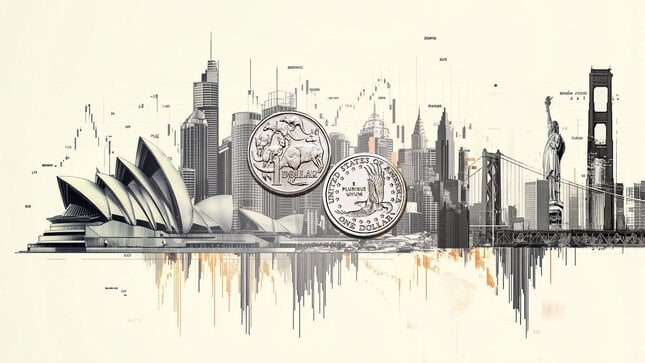Traders often ask me: what is it that distinguishes a trader to be successful compared to someone else who constantly experiences failures with a lot of losing positions and psychological breakdown?
The usual answer given by financial market professionals is that a successful trader, like every successful investor, stands out because he/she achieves the following goals:
- invests in training and knowledge,
- has a trading plan and discipline,
- understands risk management techniques,
- can control his feelings,
- is adaptable to changes,
- invests in constant learning,
- has realistic expectations,
- he is patient and persistent;
- focuses on the process rather than the outcome
- he is humble and works in terms of transparency.
All the above is correct and applies throughout time. However, few succeed in achieving these goals. Most investors and traders achieve some of these goals. At the same time, they constantly struggle with the rest of the goals, thus ultimately shaping a puzzle of circumstances that eventually leads to persistent failure and psychological pressure. The question is: what should be done to prevent this from happening?
Traders like athletes can achieve exceptional performances
- In my view, investors and traders, to prevent persistent failure and psychological stress, will need to see themselves as athletes ready to compete by achieving outstanding records. To do this, they will need to go through three stages.
- The first stage is the preparation stage. Like any athlete, every trader and investor should be well prepared.
- The second stage is the stage of continuous improvement of the skills they are required to have. Every athlete, like every investor and trader, needs to improve specific skills that they must develop continuously.
- Finally, the third stage is the stage of action in which athletes, as well as, consequently, traders and investors, must know exactly what they must do to take advantage of the opportunities that are given to them when they are in action, οr in the trade arena, where they need to be able to know how to act when opportunities arise and how to limit risks in active trading.
Seven steps define these three stages. In this article, we will mainly focus on CFDs trading.
However, approximately the same applies to all other types of trades and investments.
Seven steps in three stages
Stage 1 - Be prepared
In the first stage, referred to as the preparation stage, investors and traders should take three steps.
Step no 1 - Assessing trader’s profile
Good preparation requires self-awareness. In the first step, traders and investors need to discover themselves. This means investors and traders should assess their trading profile.
Assessing a trader's profile involves evaluating their qualifications, experience, trading style, and track record to determine their suitability and potential for participation in the financial markets.
For traders, this means they will need to define, among others, their risk appetite, experience, strategy, awareness, commitment, risk management skills, financial situation, level of regulatory compliance, and emotional discipline.
Step no 2 - Awareness of CFD types and key market variables
In the second step, traders should know exactly all the characteristics of the financial products they are trading, such as CFDs on Forex, Commodities, Cryptocurrencies, Stocks, and Stock Indices. They should also be able to know the key variables that affect the markets where CFDs are traded. For example, in the FX market, traders should understand the critical variables affecting this market, such as central bank policies, geopolitical events, interest rate differentials, market liquidity, and regulatory changes etc.; in the commodity market, traders should be aware of the variables affecting commodities, such as Supply and Demand, Exchange Rates, Geopolitical Events, Geographical Factors, Weather Factors, and Government Policies, and so forth for cryptos and stock markets. Understanding the types of CFD products and the key variables affecting markets helps traders be ready to make informed decisions and manage risk effectively.
Step no 3- Understanding the factors affecting CFD trading in global markets
The third and most challenging step for a trader to be prepared appropriately is step that concerns the attention to the factors that affect CFD trading in Global Markets. Some examples of significant factors affecting CFD trading in global markets include leverage, margin requirements, liquidity, regulatory changes, market volatility, trading costs, trading volume, market sentiment, investor psychology, market trends, seasonality and cyclical patterns, market interactions and correlations, market manipulation, speculation, trading platforms, trading tools, technical indicators & oscillators, technological developments etc.
All these factors can affect CFD trades globally in different and diverse ways; therefore, they need great attention and study.
In summary, good preparation for traders requires:
- self-awareness through the analysis of their profiles,
- knowledge of the types of CFDs and awareness of the critical variables affecting them,
- great attention must be paid to the factors that affect CFD trading on global markets.
Stage 2 – Improving trader skills
In the second stage, two steps, Step No. 4 and Step No. 5 lead to the continuous improvement of the trader's skills. Skills are enhanced when traders can assess market conditions and trade the markets with appropriate expertise.
Step no. 4 – Evaluation of market conditions
Assessing market conditions is a crucial skill for traders as every day differs from the previous one, so traders must stay informed about the constantly changing market conditions. Traders must stay updated with daily and weekly analyses from reliable market analysts for the foreign exchange, commodity, crypto, stock, and index markets. Should have access to calendars of essential announcements concerning critical economic indicators and also have access to reports from reliable international organizations such as the OECD, the IMF, the World Bank and central banks. To be informed immediately about changes concerning the regulatory framework and sanctions.
It is also vital for them to be able to compare the CFDs in the markets following the same patterns. For example, a good practice is to compare CFDs on currencies, commodities, cryptos, stocks, and stock indices using similar patterns of news, risks, opportunities, recessions, and booms obeyed in each of them for the same periods.
Another good practice is also for traders to focus on what we call global trends, which include, for example, trends in interest rate policy, government spending, fiscal policy and finally, global trends in industrial production and trade activity.
Also of great importance are the geopolitical events that lead to disagreements and conflicts, while of particular importance are the trends concerning hot topics such as the impact of innovation, new finance and FinTech on CFD products and markets.
For evaluating market conditions, what also upgrades trader's skills is assessing how the leading macroeconomic indicators affect each market at any given moment.
Step no. 5 – Trading in the markets like an expert
Acquiring market expertise is a critical resource for improving the skills of market traders. To gain expertise, traders should be focused on knowledge that concerns trading strategies, ways to calculate trading risks and returns, understanding technical analysis models and tools and choosing the appropriate combination patterns for multiple trading strategies.
Expertise also includes ways of improving self-confidence and deals with gaining knowledge of techniques involved in the use of simulation trading, also, how to keep a diary, how traders set trade expectations, how they set scenario analysis, how they find leaders to invest, how they focus on trade action and how they should consider cognitive bias.
An expert is someone who trades for a better future. This means traders follow a new roadmap for trading, set the ground for trade values, avoid walking into darkness, see opportunities in A.I., and get involved in market digital transformation.
Stage 3 – Acting in the trade arena
In the third stage, traders, by following step No 6, know how to take advantage of the opportunities given to them in the trade arena. By following step No 7, they learn how to act when those opportunities arise while limiting risks in active trades.
Step no. 6 – Take advantage of opportunities
Traders take advantage of trade opportunities using reliable trading models and trading signal providers.
For traders to take advantage of opportunities arising in the market trading arena should use trading models that clearly define entry rules for buy or sell positions, stop-loss orders, and take-profit orders. Trading models should be adapted to multiple market conditions as they can find opportunities applying in swing trading, retracement trading, patterns trading, reversals trading, breakouts trading, momentum trading, volatility trading and so forth. When using trading signals, traders, to take advantage, should assess signal providers when they act in the trading arena. By using quantitative and qualitative criteria to assess, they should examine in detail the signal provider's past profitability, consistency, number of trades at a specific period, number of open trades, number of followers, assets under management, the attitude of each provider when faces disadvantaged conditions, and so on.
Step no 7 – How to act when opportunities arise and limit risks in active trading
The seventh step maybe is the most decisive of all the previous ones, as, in this step, traders should know how to act when opportunities arise and then limit risks in their active positions. To achieve this, traders should know how to calculate the amount of money capital for each trade opportunity they are interested in, the calculation of which is essentially a function of risk and expectations for that opportunity.
In fact, traders act in a way in which they know to calculate the optimal number of contracts to achieve the maximum capital return in accordance with the trading model or trading signal by which they took a position in a CFD product. At the same time, they know how to limit the size of the potential loss to a small percentage of the total trading capital.
Also, in this step, the traders determine how to calculate the committed capital required when the trade is active, even when they experience extreme risk conditions.
Conclusion
Following these simple steps, which involve assessing the trader's profile, awareness of the types of CFDs and the key variables that affect them, a trader's understanding of the factors that affect CFD trading in global markets, assessing market conditions, improving skills on expertise, seizing opportunities and how to act when they arise, traders will be adequately ready to emerge victorious in the trade arena. The alternative is for them to achieve piecemeal goals without following a concrete and stable path of steps, leading them to a stressful situation with continuous losses without even understanding why they occur. The choice is yours.
CFDs are complex instruments and come with a high risk of losing money rapidly due to leverage. You should consider whether you understand how CFDs work and whether you can afford to take the high risk of losing your money. The Article/Information available on this website is for informational purposes only, you should not construe any such information or other material as investment advice or any other research recommendation. Nothing contained on this Article/ Information in this website constitutes a solicitation, recommendation, endorsement, or offer by LegacyFX and A.N. ALLNEW INVESTMENTS LIMITED in Cyprus or any affiliate Company, XE PRIME VENTURES LTD in Cayman Islands, AN All New Investments BY LLC in Belarus and AN All New Investments (VA) Ltd in Vanuatu to buy or sell any securities or other financial instruments in this or in in any other jurisdiction in which such solicitation or offer would be unlawful under the securities laws of such jurisdiction. LegacyFX and A.N. ALLNEW INVESTMENTS LIMITED in Cyprus or any affiliate Company, XE PRIME VENTURES LTD in Cayman Islands, AN All New Investments BY LLC in Belarus and AN All New Investments (VA) Ltd in Vanuatu are not liable for any possible claim for damages arising from any decision you make based on information or other Content made available to you through the website, but investors themselves assume the sole responsibility of evaluating the merits and risks associated with the use of any information or other Article/ Information on the website before making any decisions based on such information or other Article.
Editors’ Picks

Gold Price Annual Forecast: 2026 could see new record-highs but a 2025-like rally is unlikely Premium
Gold hit multiple new record highs throughout 2025. Trade-war fears, geopolitical instability and monetary easing in major economies were the main drivers behind Gold’s rally.

AUD/USD Price Annual Forecast: Is 2026 the year the Aussie breaks above 0.70? Premium
In a context where AUD/USD rate differentials, institutional credibility, and geopolitical dynamics are once again central, 2026 could mark a new phase in the balance of power between the Australian Dollar and the US Dollar.

USD/INR Price Annual Forecast: Indian Rupee could disappoint both optimists and pessimists alike in 2026 Premium
The Indian Rupee (INR) has seen a consistent depreciation against the US Dollar (USD) for the last several years and turned out to be the worst-performing Asian currency in 2025.

Top 10 crypto predictions for 2026: Institutional demand and big banks could lift Bitcoin
Bitcoin’s (BTC) adoption story is unraveling and the king crypto could see institutional demand return in 2026. Crypto asset managers like Grayscale are betting on Bitcoin’s rally to a new all-time high next year, and themes like Bitcoin as a reserve asset are emerging.

S&P 500 Price Annual Forecast: 2026 to benefit from decent growth as Trump runs it hot Premium
BlackRock, the world's largest asset manager, ran an online survey in early December asking respondents whether attractive returns for risk assets would continue for a fourth straight year in 2026.
RECOMMENDED LESSONS
Making money in forex is easy if you know how the bankers trade!
I’m often mystified in my educational forex articles why so many traders struggle to make consistent money out of forex trading. The answer has more to do with what they don’t know than what they do know. After working in investment banks for 20 years many of which were as a Chief trader its second knowledge how to extract cash out of the market.
5 Forex News Events You Need To Know
In the fast moving world of currency markets where huge moves can seemingly come from nowhere, it is extremely important for new traders to learn about the various economic indicators and forex news events and releases that shape the markets. Indeed, quickly getting a handle on which data to look out for, what it means, and how to trade it can see new traders quickly become far more profitable and sets up the road to long term success.
Top 10 Chart Patterns Every Trader Should Know
Chart patterns are one of the most effective trading tools for a trader. They are pure price-action, and form on the basis of underlying buying and selling pressure. Chart patterns have a proven track-record, and traders use them to identify continuation or reversal signals, to open positions and identify price targets.
7 Ways to Avoid Forex Scams
The forex industry is recently seeing more and more scams. Here are 7 ways to avoid losing your money in such scams: Forex scams are becoming frequent. Michael Greenberg reports on luxurious expenses, including a submarine bought from the money taken from forex traders. Here’s another report of a forex fraud. So, how can we avoid falling in such forex scams?
What Are the 10 Fatal Mistakes Traders Make
Trading is exciting. Trading is hard. Trading is extremely hard. Some say that it takes more than 10,000 hours to master. Others believe that trading is the way to quick riches. They might be both wrong. What is important to know that no matter how experienced you are, mistakes will be part of the trading process.
The challenge: Timing the market and trader psychology
Successful trading often comes down to timing – entering and exiting trades at the right moments. Yet timing the market is notoriously difficult, largely because human psychology can derail even the best plans. Two powerful emotions in particular – fear and greed – tend to drive trading decisions off course.


